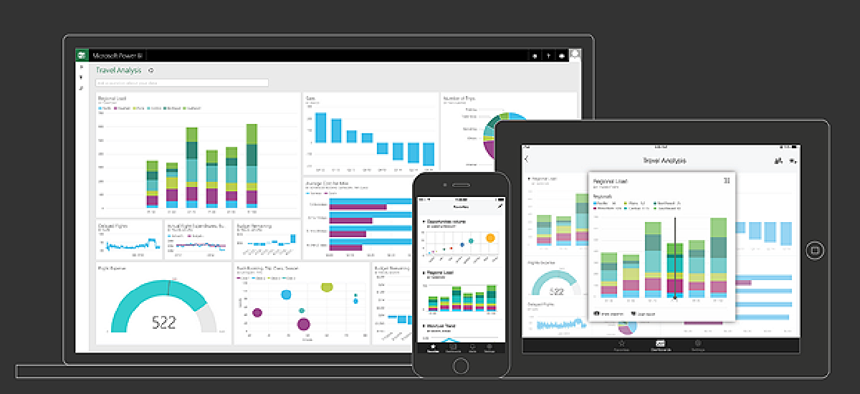Power BI expands access to data sources

The newest version of Power BI, Microsoft’s cloud service that lets users create, analyze and share data visualizations includes connectors to a variety of cloud-based data sources, including Data.gov, the main index of government open data.
The newest version of Power BI, Microsoft’s cloud service that lets users create, analyze and share data visualizations, now includes connectors to a wider variety of cloud-based data sources, including Data.gov, the main index of government open data.
Power BI, an end-user business intelligence tool, moves away from providing static reports and toward a cloud service that can give real-time data updates, send alerts about those updates and allow users to access reports from anywhere, at any time and on any device.
“What we’re trying to do is add tools on top of very complex [data] to make it easier and simpler for users,” said Susie Adams, chief technology officer at Microsoft Federal. “The goal really is to empower the average user to be able to get access and do data analysis vs. having to hire a specific data analyst.”
The tool has two components: Power BI Designer and customizable dashboards. Designer is a desktop application that lets users connect to data sources on their computer, in the agency’s data center, in a SQL database or in the cloud.
Users don’t need to know much about the data, Adams said. A “Get Data” button leads users to choose from a list of database options including, Sybase, SQL, MySQL, Salesforce, GitHub and Facebook. Or users can do a blank query using natural language. Either way, once they pull data into Power BI, they can build an interactive dashboard or report, complete with visualizations such as maps and charts, right in the tool without having to write any code.
“We have a lot of built-in data connectors that meet all the standard open data formats that are out there, and even proprietary relational databases,” Adams said.
The customizable dashboards, accessible via any browser or a Power BI mobile app, let users monitor as much of their data as they want on one screen, and they can be shared among workers.
Microsoft chose to include Data.gov because it’s another great data resource, Adams said.
“It doesn’t really matter whether information is in Data.gov, sitting in Salesforce.com or in an Oracle database behind an agency firewall, we want users to be able to access this data using standard [application programming interfaces] and data protocols,” Adams said. “We built the toolset to give users access to data regardless of where it lives, pull it back in and make sense of it.”
Power BI accesses data from Data.gov just as any other tool would – for instance, by downloading it. The site directs users to agencies’ open data written in standard formats, such as OData, CSV, Excel and Extensible Markup Language.
Agencies can use Power BI in a number of ways, Adams suggested.
If the Health and Human Services Department published open data about this season’s flu epidemic, for instance, the department could create and publish a report using Power BI Designer. HHS could then post the report on a public website, and anyone interested in the information would get it in real time.
Other potential use cases include the Internal Revenue Service posting how many tax returns it still needs to process or an agency sharing progress on a project via a customer relationship management system.
These tools will help government workers with any data analysis that’s going on today in an agency, Adams said.
NEXT STORY: DOE pilots big data infrastructure projects





